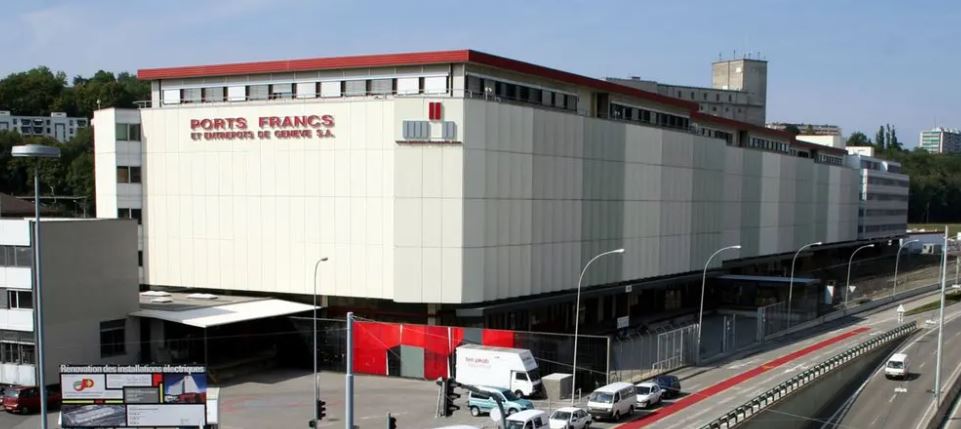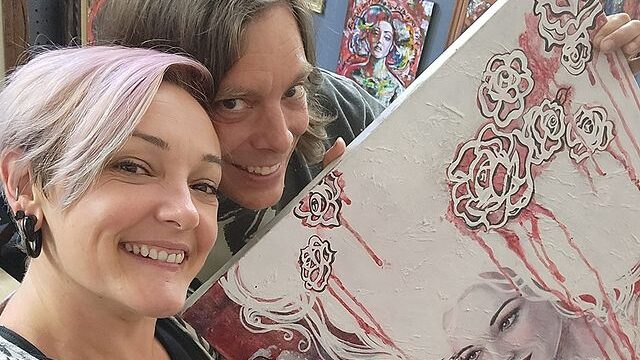Where Do The super rich hide their art. Freeports
I could also have called this, “Where billionaires store and trade art like ultra expensive Pokemon Cards”
It’s a good time to be in the art business with the ultra rich buying masterpieces at record prices. But what happens to the art in between auctions? Turns out that much of it is not displayed in homes or galleries. It’s kept in storage to what some refer to as an art graveyard. The super rich store their art in freeports.
What is a Freeport?
Freeports were originally established as special duty-free facilities to temporarily store basic, perishable goods, where normal customs and tax rules don’t apply. But nowadays they are high-tech dungeons where the super rich can stash rare wines, diamonds, vintage cars, and also something valuable to society as a whole: fine art collections.
“The Geneva Freeport holds the world’s largest and most secretive art collection. It also has a reputation for helping the ultra-wealthy evade taxes; and more recently, helping Russian oligarchs avoid sanctions.” SWISS TIMES
Wealthy collectors are increasingly opting to store their prized Masterpieces, worthy of the best museums in tax-free havens. The public isn’t allowed in. Even the owners might not lay eyes on the art for years at a time. The Geneva Freeport, a vast customs warehouse, boasts the world’s largest and most secretive art collection, valued at $100 billion. According to the New York Times it houses around 1.2 million artworks, including a thousand Picasso pieces, it operates as a haven for the ultra-wealthy, allowing tax evasion and asset concealment.

What makes tax-free storage facilities so appealing to the Uber rich?
Beyond the fortified perimeters are climate-controlled environments and an impenetrable veil of confidentiality but even more enticing is tax “advantages” read that as clever loop holes. What was once a straightforward way to protect valuable pieces has evolved into a sophisticated financial strategy. The art is viewed not just as a cultural treasure but as a capital asset and these free ports, a haven for hiding assets tax-free.
As long as items remain in the facility, owners are not required to pay import taxes or customs duties. While in the warehouse, items are considered in “transit.” EXAMPLE: At auction a $50 million painting is bought in New York, $4.4 million is added in sales tax; however, this bill disappears when the painting is shipped to a freeport and remains suspended until it leaves the warehouse which it may never do.

Shady Practices
“No one can tell if the art held in them was stolen, bought with drug money, or simply a prudent investment expected to yield great returns in time.” Artsy
The potential for misuse of these facilities is very high and effort to introduce transparency in these storage facilities, particularly in Switzerland, can get complicated. The law only requires inventory lists in free ports to have a legal owner. This can be a company or legal entity without revealing the true identity of the owner of the merchandise.
When art is exchanged this way, there is no paper trail detailing what’s been bought or sold, at what price and by who. This system allows anyone to rent space including traffickers of stolen art and looted antiquities. The rich can buy and sell in secrecy and without taxation. There are stories of art being taken out of one vault to be sold and moved to another vault within the facility (watch the documentary below).
Is Art Just For The Rich?
So is the artworld doomed? I am by no means an expert but as a professional artist, to see precious works traded like Pokemon cards is infuriating but, no, I don’t believe so. Let’s be honest, these freeports are reserved for the ultra rich which doesn’t mean there isn’t hope for the rest of the world’s artists. The price tag on art isn’t just a random number. It can be influenced by so many underlying conditions, not just deep pockets and works can sell from $100’s to 10,000s, well within many people’s budgets. Don’t believe me?

What income puts you in the top 1% in Canada?
According to Statistics Canada, if you want to be in the 1% of top earnings, you’ll need to make around $500,000 a year. Yup, not in the millions or billions which surprised me. To be inside of the top 5% of earners in Canada, you would need to earn about $236,400 and 10% of earners in Canada, would need to earn about $174,400 annually. An artists on the other hand… most professionals make less than $10,000 annually.
As is well known, a lot of artists resort to day jobs in order to sustain their practices. I have a supportive husband and a rental income that I had to do hard labour of flipping houses with my father to finally be able to afford. The majority of artists are not part of the upper middle class they work for a living. The majority may not be considered “great”, but most are dedicated to their craft, many do good work, and I’d argue that the world is generally better off because of their contributions to culture and society.
I’d also argue that they should get paid for their work. Buy original art from living artists and let the billionaires play with their ultra expensive trading cards.
STAY PUNK AND BUY ART!!!
If you’d like to dive deeper into the world of freeports check out this documentary.
source: New York Times , Town & Country Fordham University

Pingback: The Woman's Art Market: Progress and Challenges - Sara Leger - Cherry Bomb Studio Gallery
Pingback: Is Art Tax Deductible In Canada? - Sara Leger - Cherry Bomb Studio Gallery